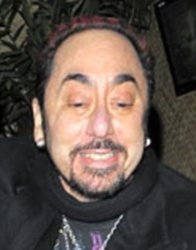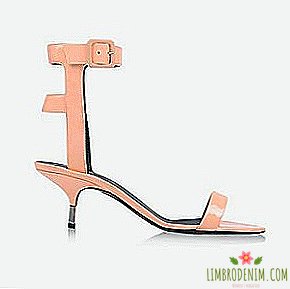From cap to veneers: Modern ways of correcting bite
Text: Karina Sembe
Nowadays, we can change our bodies as we please.. For someone, transformation of appearance is a way to become more self-confident, and for someone - a kind of game. However, the reasons for "working on yourself" can be not only aesthetic - for example, there are a number of orthodontic indications for the correction of occlusion. Bite is the ratio of the upper and lower dentitions when the teeth are fully closed. With the pathological bite, the load on the teeth is unevenly distributed, which in some cases is fraught with not only grinding and tooth loss, but also a distortion of the facial contours, headaches and other abnormalities in the temporomandibular system.
The task of the orthodontist is the formation of a bite as close as possible to his physiological appearance. Modern tools are special orthodontic constructions - removable and non-removable. Removable designs include plates, caps, trainers, and non-removable braces. Nowadays, they are put to adults as well, although for many such a step is not easy, regardless of age - a little later we will have material, where different characters will tell how they live with braces and whether that result is worth it. Personal experience of others can support those who are still in thought or have already decided to correct the bite. However, in all that relates to medical intervention, universal advice does not exist. Whether the correction is necessary for you, which method is better, how to care for the oral cavity during treatment - only the orthodontist can answer all these questions after a thorough examination. Whatever it was, before going to the doctor it would not hurt to find out how caps differ from trainers and in what cases you can do with veneer.
Records

The plates were invented by French dentist Pierre Fauchard, who is considered to be the first orthodontist. In 1728, he made a plate to align the teeth - a thin strip of silver, which was attached to the teeth with wire and silk ligature. Since then, the plates have become more technological and now represent a metal construction on a plastic base for the upper or lower jaw, which is fixed on the teeth with the help of special hooks - clasps.
Unlike bracket-systems, the plates do not move the teeth, but only keep them in a predetermined position, therefore they have a rather limited scope. The plates are set mainly for children and adolescents - during the period of active formation of the jaws, and for adults - to consolidate the results achieved by other correction methods (for example, the bracket system). To straighten the teeth in a removable device, wire arms, hinges and springs are mounted. If the task of the orthodontist is to expand the jaw, insert the expansion screw between the plate halves. With the gradual regulation of the situation on the increasingly consistent with the "correct" this system aligns the dentition. Most modern orthodontists recommend removing records at the time of eating, brushing teeth and playing sports. Carry a design throughout 3-15 months depending on indications.
Capes

Abroad, caps, or aligners, have been successfully used for correction of bite anomalies for several decades, and in the CIS countries they have been used recently. Caps are made of transparent polymeric material, therefore not very noticeable on the teeth. Most often with the help of them correct the bite in adolescence. Adults, as is the case with the plates, caps can be installed as a “last touch” in the treatment by other methods. For correction of occlusion anomalies, round-the-clock mouth guards are used: they are worn for at least 21-22 hours, otherwise the results of the correction will have to wait a very long time. After the end of bite correction, during the so-called retention period, when the effect of leveling is fixed, night caps are prescribed. They are also used to protect the teeth with bruxism - the so-called tooth grit.
There are standard caps made on average parameters of the jaw, and thermoplastic ones, which soften under the influence of hot water and solidify in the necessary form directly on the jaw. Neither option is capable of effectively correcting significant distortions; for this, individual caps are needed. First, the orthodontist makes a cast of the dentition, then adjusts it, taking into account the desired position of the teeth. On this basis, a plaster model is created, and then a series of cap-plastic and silicone is produced. A mouthpiece moves the tooth in the right direction, and when it reaches a given position, the doctor sets the next mouthpiece - and so several times, until the tooth finally takes the required position. Kapy set not only to correct the position of the teeth, but also to keep them in place. The design should be removed before eating and brushing your teeth.
Trainers

Trainers are made of elastic silicone, and in matters of bite correction, they are also most in demand for adolescents - the most numerous group of patients. Trainers put on the jaw during the night's sleep, as well as during the daytime - usually within 2-4 hours. In children, trainers can stimulate or slow down the growth of the jaw, alter the width of the palate and the shape of the jaw bones, in adults, eliminate the excessive pressure of the maxillofacial muscles, causing abnormal development of the bite, and thus maintain the result of treatment with other methods. In addition, trainers use to work on minor relapses of tooth curvature after correction, correcting the tongue, forming nasal breathing, and even controlling the effects of various unhealthy habits related to dental health (for example, sucking fingers or chewing on various objects). An important indication for the application of this type of construction is the inability to use plates and bracket systems.
The first treatment used in the so-called initial trainer: a soft and flexible design provides quick adaptation. The final trainer of harder material affects the teeth more intensely. To consolidate the results after the active period of treatment, a retention trainer is used, which is precisely what helps to prevent relapses. The period of treatment with trainers, as in other cases, depends on the evidence and can last from six months to several years.
Braces

With the help of these fixed structures, invented back in the 20s of the last century, many violations of bite can be corrected. The bracket system exerts moderate pressure on the wall of the hole in which the tooth is located, as a result of which there is a slight divergence of the bone, and the tooth will begin to change its position. The formed cavity eventually grows, fixing the tooth in a new position. Correction may take an average of one and a half to two years or more. Sometimes according to the results of the correction, the installation of a special retainer in the form of plates, a cap or a trainer is shown so that the teeth do not return to their original position. Some doctors claim that the patient's age practically does not play a role (provided that the jaw bones and gums are in a healthy state), but for children under 10-12 years old, until the root system is fully formed, the installation of braces is not shown.
In addition to classic steel braces, there are many other options. For example, ceramic are durable, do not irritate the gums and are relatively invisible, as they are matched to the tone of the teeth. The plastic ones are rather fragile and are easily painted with food dyes, but they are inexpensive and can be used to correct the bite in cases when wearing braces with metal elements is contraindicated. Sapphire systems are durable, transparent, resistant to food dyes; In many ways, they are similar to ceramic braces, but they are somewhat more expensive. There are also combined systems in which several materials are used (for example, plastic and metal). Fully invisible to others lingual braces - they are attached from the side of the tongue. True, the wearing of lingual systems - usually metal - affects diction, the treatment takes a little longer than vestibular braces, and installation and maintenance is more difficult, which affects the price.
Veneers

Veneers are thinnest plates made of ceramic or composite material that are superimposed on the front surface of the teeth and the cutting edge (unlike the crown, which covers the entire tooth). Using veneers they mask chipped teeth, level the height of the dentition, eliminate gaps between teeth, change the color of enamel. These peculiar "half-crowns" do not move teeth, but are only responsible for the visual side, but this does not prevent the procedure from gaining more and more popularity, so we include it in the material as a bonus. Not only is aesthetic function - veneers also protect teeth from damage. They are often set by musicians playing wind instruments.
Veneers are made according to the shape, color of the patient's teeth and his wishes. Ceramic are more expensive, but they are stronger composite. It is important to remember that when installing any veneers, irreversible turning of enamel occurs. The American company Cerinate patented ultra-thin ceramic veneers - the so-called Lumineers, which allegedly can be fixed on the tooth without prior grinding. In fact, this is more a marketing move than an innovative method. First, most dental technicians are quite capable of making veneers of the same thickness, namely, 0.2 mm, using conventional technology (although the masking ability of ultrathin plates will be low). Secondly, a qualified orthodontist is unlikely to set about fixing lumineers or any other veneers without contouring the teeth, since it is only when turning that necessary long-term effect is achieved. In case of complete removal of the veneer, additional tooth restoration will be required.
Photo: Ebay, Lazada, Adam Antolak- stock.adobe.com, SMA Studio - stock.adobe.com, pavelsm27 - stock.adobe.com, sveta - stock.adobe.com




